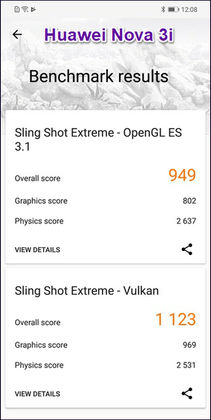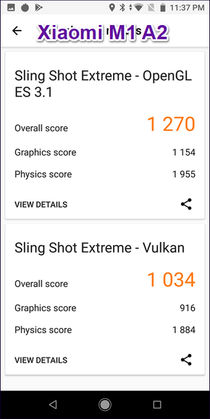
Only recently, the Huawei Y9 was officially launched bearing the company’s own Kirin 710 chipset. This chipset was designed to succeed the slower Kirin 659 found in the more affordable smartphones by providing better performance and efficiency. These days, as the competition for flagship devices gets more and more intense, manufacturers like Huawei have started to invest resources and focus on its mid-range family, believing them to produce more dividends in the long run.
However, Qualcomm is also headstrong in the same regard, because long before the Snapdragon 710 was officially launched, the Snapdragon 660 was found in several devices. As you’ll find out shortly, lots of phone makers still tend to stick with the Snapdragon 660 because of its value, performance, and efficiency that it is able to provide to customers. This chipset is the closest contender to the Kirin 710 and there are several reasons for that, which you will be reading about shortly in fine detail.
Performance, Fabrication Node, Specifications
Let us start with the fabrication node of both chipsets. The Kirin 710 is made on the more efficient 12nm FinFET process, while the Snapdragon 660 is made on the 14nm LPP FinFET node. This means that the Kirin 710 is more efficient than the Snapdragon 660, which is also the reason why it costs slightly more for Huawei’s HiSilicon division to make. Huawei claims that its latest SoC for mid-range devices is 75 percent more efficient in single-core tests and delivers 68 percent better multi-core speeds than its predecessor, the Kirin 659.
While both silicon implement a 64-bit architecture, they use different cores. The Kirin 710 features a quad-core Cortex-A73 running at 2.2GHz and another quad-core Cortex-A53 that is clocked at 1.7GHz. The Snapdragon 660 uses Qualcomm’s custom Kryo 260 cores in an octa-core package with the base frequency set to run at 2.2GHz. Both SoCs also use different GPUs, with the Kirin 710 featuring an ARM Mali-G51 with four cores, while the Snapdragon 660 sporting an Adreno 512 GPU with support for the Vulkan API.
Gaming, Camera, and AI
Both the Kirin 710 and the Snapdragon 660 deliver extra emphasis when it comes to gaming performance, with focus invested on camera improvements as well as AI. According to Huawei, the GPU present in the Kirin 710 is 1.3x faster than the GPU present in the Kirin 659, and yet, it fails to gain a lead against the Snapdragon 660, despite getting support for Huawei’s GPU Turbo technology. In case you didn’t know, GPU Technology is a new implementation that works at both a hardware and software level to eliminate performance bottlenecks while also focusing on efficiency to conserve battery life.
The Snapdragon 660 features support for Vulkan API, which reduces overhead on the GPU and delivers more performance, which is why in the gaming benchmarks given below, Qualcomm’s chipset fares better than the Kirin 710. However, the GPU performance only reveals a portion of that story. This is because according to AnTuTu benchmarks, the Kirin 710 running in the Huawei Nova 3i is able to best the Xiaomi Mi A2 in the CPU tests, but fails to do the same thing in the GPU runs.
Coming to the camera specifications, the Snapdragon 660 provides support for up to a single 25MP camera and dual-camera of 16MP each. It also carries the much improved Spectra ISP chip and combine that with the Qualcomm Clear Sight technology, the Image Signal Processor is able to capture more light in low-light environments. Also, the new chip promises zero shutter lag, faster autofocus, and more accurate color reproduction when producing the final image.
Huawei did not provide the camera specifications that the Kirin 710 supports, but given below are the camera samples taken from Guiding Tech, comparing the Nova 3i (features a Kirin 710) and the Mi A2 (features a Snapdragon 660) so you’ll get to know the differences. Coming to the AI performance, unlike the Kirin 980, the Kirin 710 does not feature a dedicated NPU and relies on both the CPU and GPU for AI-related tasks. Such tasks involve color correction when snapping images, which also takes scene recognition into account and a slightly more accurate Face Unlock feature in smartphones.
As for the Snapdragon 660, it too does not sport a dedicated NPU, but it does support Qualcomm’s Neural Processing Engine SDK (Software Development Kit). This SDK works with some of the popular AI frameworks such as Caffe/Caffe2 and Google’s TensorFlow to enable new functionalities ranging from word matches, phrase identification, scene recognition, image color correction and more. The presence of these elements gives the Snapdragon 660 the needed edge in carrying out smarter functions and tasks.
For now, it appears that only the flagship chipsets will be given special treatment when it comes to implementing NPUs.
Sustainability
One reason why phone manufacturers continue to use Qualcomm’s Snapdragon 660 in their devices is that the cheaper 14nm LPP FinFET architecture costs them less to implement. Despite this previous-generation manufacturing process, the Snapdragon 660 is still able to deliver a significant level of performance, so it is no wonder why it is found in price/performance devices such as the Mi A2 (review), Realme 2 Pro and the newly launched Galaxy A9 (2018).
If you’ll notice, the Snapdragon 710 might provide a performance and efficiency upgrade over the Snapdragon 660 but very few devices actually feature it. That is because it is made on the more expensive 10nm FinFET process plus add Qualcomm’s newly designed Kryo cores, and you as a manufacturer will have to end up paying more. Imagine if you’re a smartphone manufacturer and you need to produce phones in the thousands. You will obviously look for a chipset solution that provides you better cost-savings from Qualcomm while also giving the customer more value in return and less opportunity to complain about.
That is where the Snapdragon 660’s existence is extremely important for manufacturers and in the foreseeable future, we are sure it will be maintained just like that. When we start seeing 5nm SoCs in the market, it will immediately make 10nm FinFET silicon variants like the Snapdragon 710 more affordable for both OEMs and phone buyers.
Even then, the Snapdragon 660 should boast a tremendous amount of significance because various different manufacturers will be launching Rs. 10,000 smartphones in the far future and these could end up using Qualcomm’s 14nm LPP chipset. As a conclusion, the Snapdragon 660’s sustainability is looking more than positive and even though it fails against the Kirin 710 in the CPU tests, it has a lead in various different benchmarks and scenarios.
After you are done reading this, you can check out our video review of the Mi A2.
-
 View Photos (12)Xiaomi Mi A2₹12,999 Buy on Amazon3.9 ★Expert Score: 8.0/10Snapdragon 660 Octa core5.99″ (15.21 cm) IPS LCD12+20 MP Rear Camera20 MP Front Camera4 GB RAM | 64 GB StorageCompare See specifications
View Photos (12)Xiaomi Mi A2₹12,999 Buy on Amazon3.9 ★Expert Score: 8.0/10Snapdragon 660 Octa core5.99″ (15.21 cm) IPS LCD12+20 MP Rear Camera20 MP Front Camera4 GB RAM | 64 GB StorageCompare See specifications -
 View Photos (10)realme 2 Pro 128GB₹14,990 Buy on Flipkart3.0 ★Snapdragon 660 Octa core6.3″ (16 cm) IPS LCD16+2 MP Rear Camera16 MP Front Camera8 GB RAM | 128 GB StorageCompare See specifications
View Photos (10)realme 2 Pro 128GB₹14,990 Buy on Flipkart3.0 ★Snapdragon 660 Octa core6.3″ (16 cm) IPS LCD16+2 MP Rear Camera16 MP Front Camera8 GB RAM | 128 GB StorageCompare See specifications




















